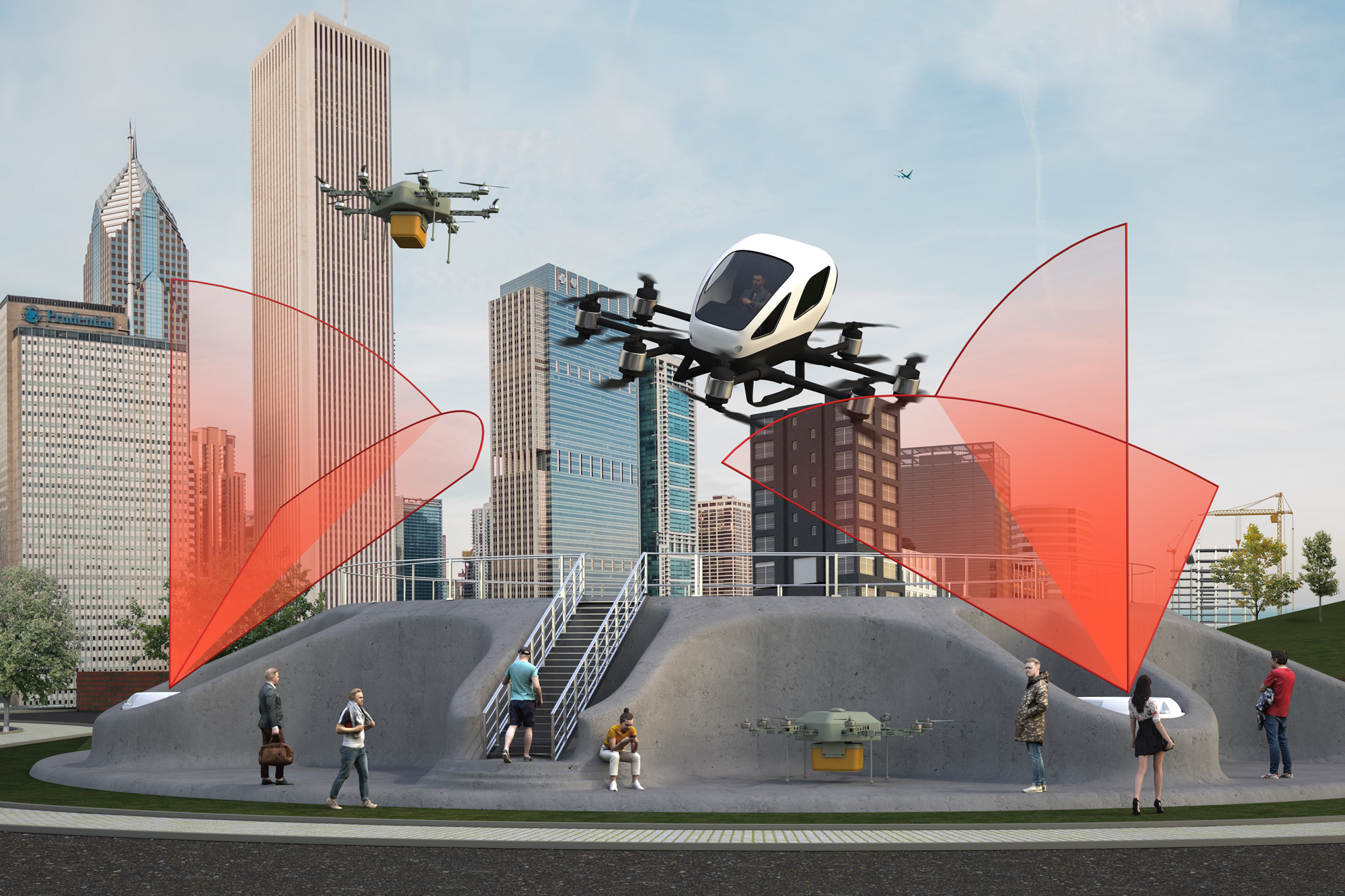Designing Vertiports Safely

Transporting people via air cab? It is already set to become reality at the 2024 Olympic Games in Paris. Fraunhofer FHR is developing novel concepts to monitor future 3D mobility intelligently and resiliently.
Multicopters are by no means just a gimmick: They are already being used by fire departments and disaster control. In the future, they will take on even more diverse tasks, for example in logistics and parcel transport. And in the form of »electrical vertical takeoff and landing« systems, or eVTOL for short, they will even be able to transport people. What sounds like something out of a science fiction movie should already become reality at the 2024 Olympic Games in Paris. Various airlines are planning to equip the Games with appropriate eVTOLs to transport people from the airport to the Games. The systems are still controlled by a human pilot, and one passenger is seated in each air cab. It is hoped that these drone systems could increase social acceptance to such an extent that autonomous flying vehicles will be possible in five to ten years. After all, if urbanization continues to advance, it is inevitable that transportation systems will be extended to the third dimension.
Sensor network monitors Vertiport with high precision
The take-off and landing platforms are particularly critical in the field of 3D mobility: After all, there is a lot of »crowding« there. In the interdisciplinary competence group »Civil Drone Systems«, researchers at Fraunhofer FHR are therefore developing - across departments in order to bundle competencies - a sensor network including radar sensor that monitors air traffic at the Vertiport with high precision. In contrast to established monitoring systems based on mobile communications, the system can also detect eVTOLs that do not have a corresponding communication device on board, as well as construction cranes, flocks of birds or trees blocking the entry and exit aisles. Beyond detection, the system should also be able to classify obstacles, i.e. distinguish between drone, bird and tree.
Network of numerous small sensors
To be able to implement mobile drone ports, such as those that will be needed for the Olympics, and not provide a central weak point, the researchers are relying on a network of numerous decentralized active and passive sensors that collectively scan the entire area. The size of the scanned area can also be easily adjusted. Signal processing also does not start at a central point, but is decentralized via edge computing. The long term-objective comprises any number of sensors that are automatically networked throughout the landing zone. If the sensors are aligned in such a way that they cover the airfield redundantly, shadowing and failures are also covered - the system becomes robust and resilient. It´s not only interesting for vertiports; in the future, it could also monitor corridors along which transport drones move through cities.